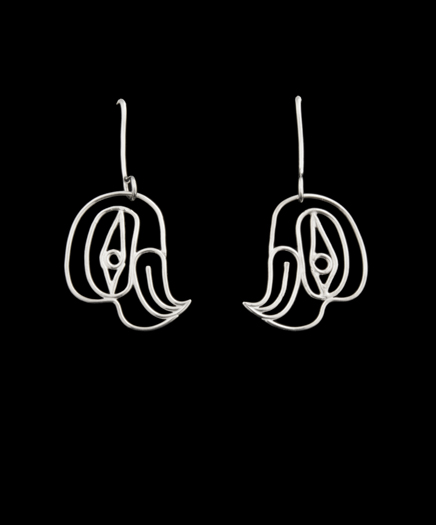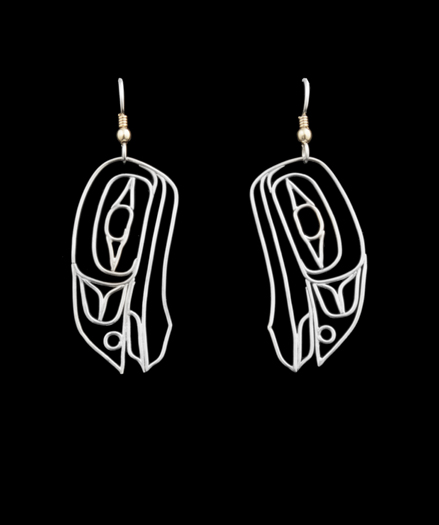Kelly Britz, a third generation Washingtonian, was born predisposed to his initial engineering career, but he was captivated by the art of the Northwest native peoples from a very early age. In the early 1970’s, he was privileged to handle wonderful replicas of real native artifacts by way of the Burke Museum’s “Burke Boxes,” which his mother used for her anthropology classes. The Burke Boxes were large plywood containers filled with replicas of native objects like spoons, bowls, and carving tools, along with a corresponding teaching plan for use in class rooms. The originals of the objects represented in the boxes may have been treasured items built for day-to-day use, but to Kelly, they were fascinating, real pieces of art.
Kelly’s first formal teacher in NW native art was Marvin Oliver in 1973, while Kelly was still in high school. In the decades since, he had the honor of learning various art forms and styles of the NW’s native people from respected artists Scott Jenson, Barry Harem, Loren White, Steve Brown (who, while a UW graduate student, made many of those replicas in the Burke Boxes 30 years earlier), Duane Pasco, Norman Tait, Isreal Shotridge, Jay Haavik and Tim Runyan. Kelly also studied engraving and silver working with master goldsmiths Owen Walker and Joe Silvera.
While he loves all forms of NW native art, Kelly has focused on Formline Filigree jewelry.
Artists Statement – Formline Filigree
I think Formline Filigree all started when my wife wanted lightweight earrings. I don’t remember if the idea of formline in wire was hers or mine since we both very much admire the historical filigree jewelry traditions of Scandinavia. Executing NW formline as filigree was initially a battle of intent over material and process. Many filigree jewelry traditions use geometric combinations of pinwheels, whorls and spirals using twisted wire. Classic NW formline design follows completely a different set of rules, but with unlimited creativity. Making silver wire conform to NW formline rules turned out to be a bit challenging.
I’m not a minimalist in any other aspect of my life but reducing the integral beauty and grace of a formline design down to the barest line, curve and intersection of wire has been highly inspiring to truly appreciate the subtleties of a design. While executing the design in silver on the bench, adding each additional wire component can get a bit petrifying. Most of my silver work is fused using a gas torch. I work very close to the melting temperature of the silver to make the joins. Fusing is essentially welding without adding any additional metal. Fused joins are stronger than soldered joins, and as strong as the original silver, but there is little room for error. I use Argentium silver which has a higher silver content than sterling. It is alloyed with the rare element germanium, making it more tarnish resistant than sterling silver and a bit more forgiving when working at high heat.
Each tiny wire component of a Formline Filigree design can take up to an hour to hand form and file to a perfect “formline” fit. If I’m having a good day, I get to sneak that next tiny piece into the design without turning all the nearby finished filigree into a small puddle of silver on my bench as I’m trying to get that last join to flow. As a design progresses, the contest can get intense as the investment in time, effort and risk grows towards the final form. Also, there is the challenge of seeing how many design elements I can form from a single piece of wire. The engineer in me just loves all this.
Although very time consuming, executing a formline design in wire as filigree and then joining it all at the very limits of the material is challenging and exciting. I hope you like it, I certainly enjoyed making these pieces.


